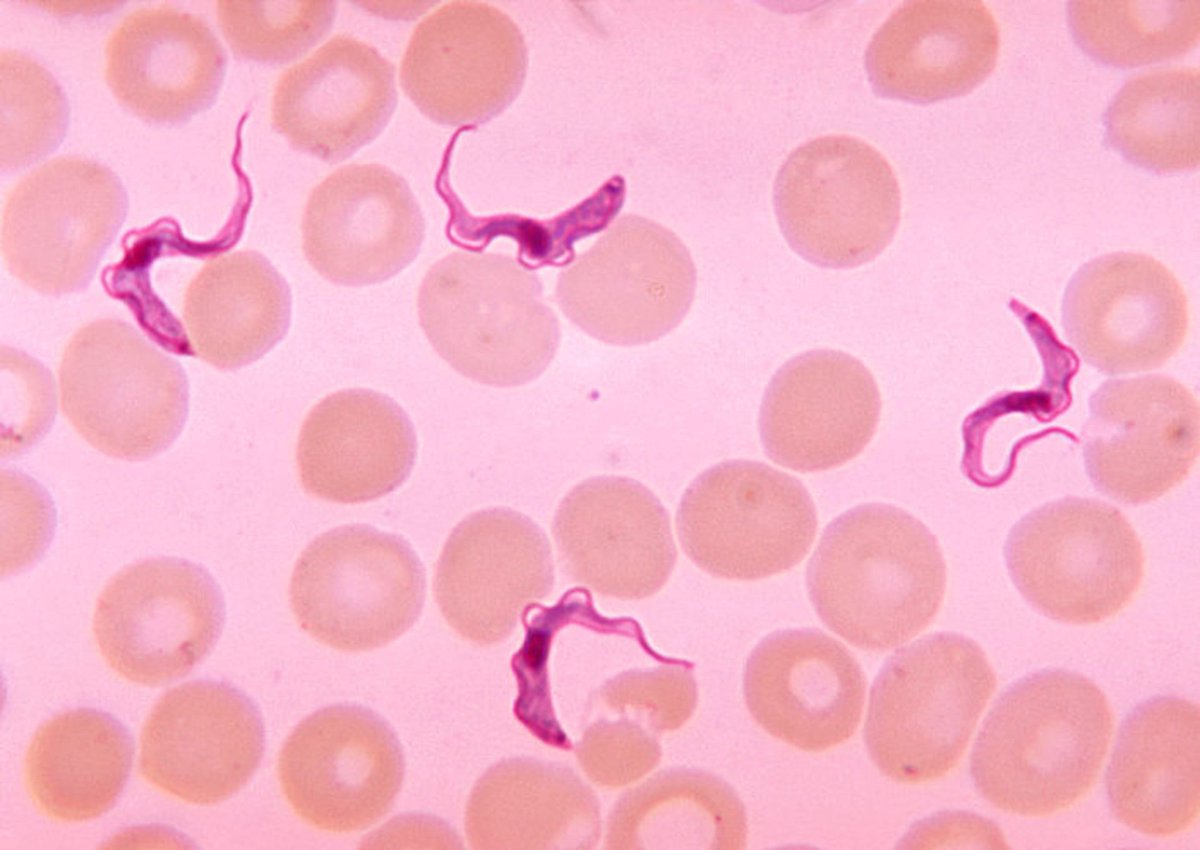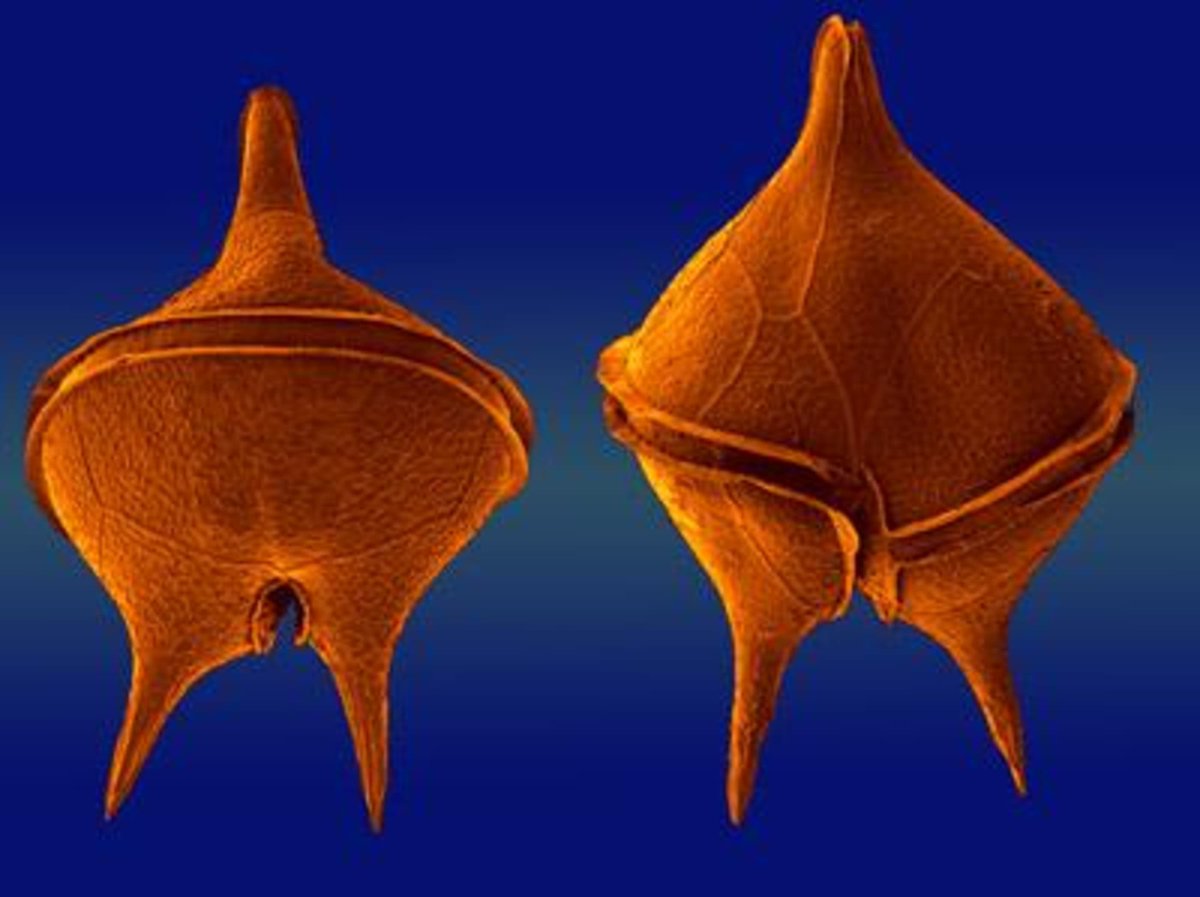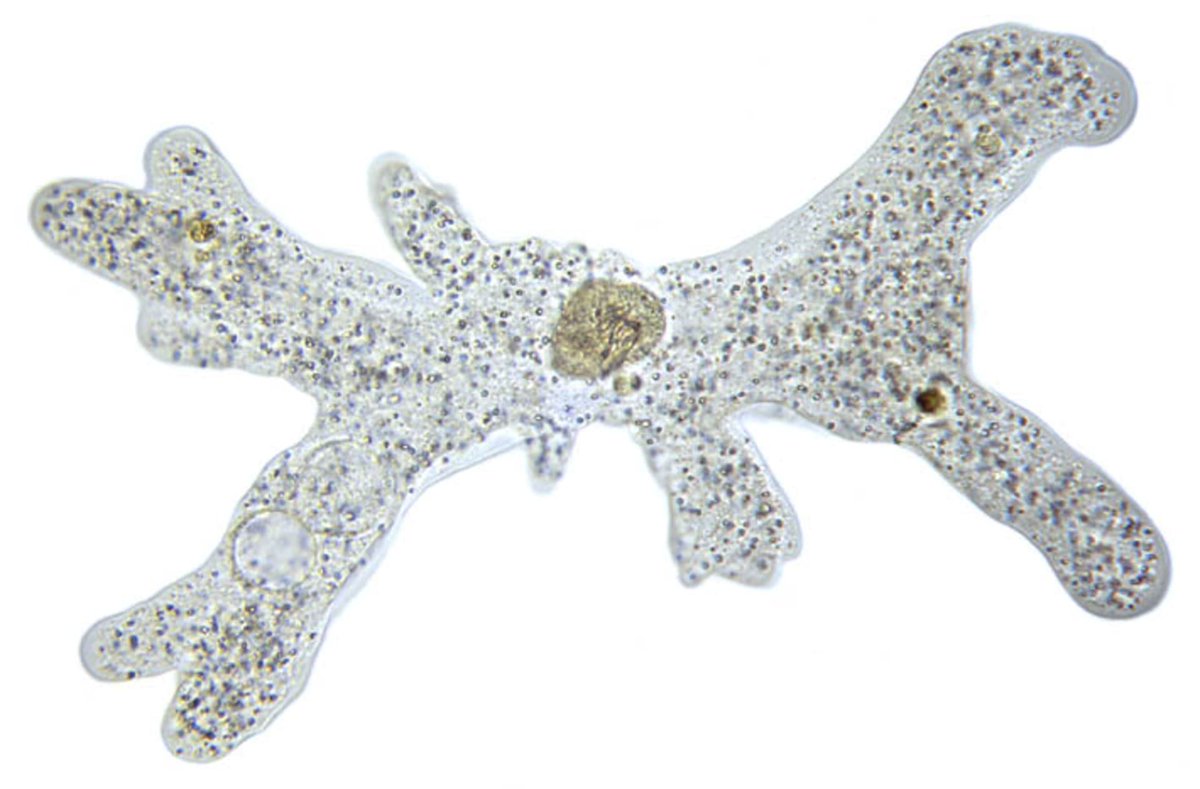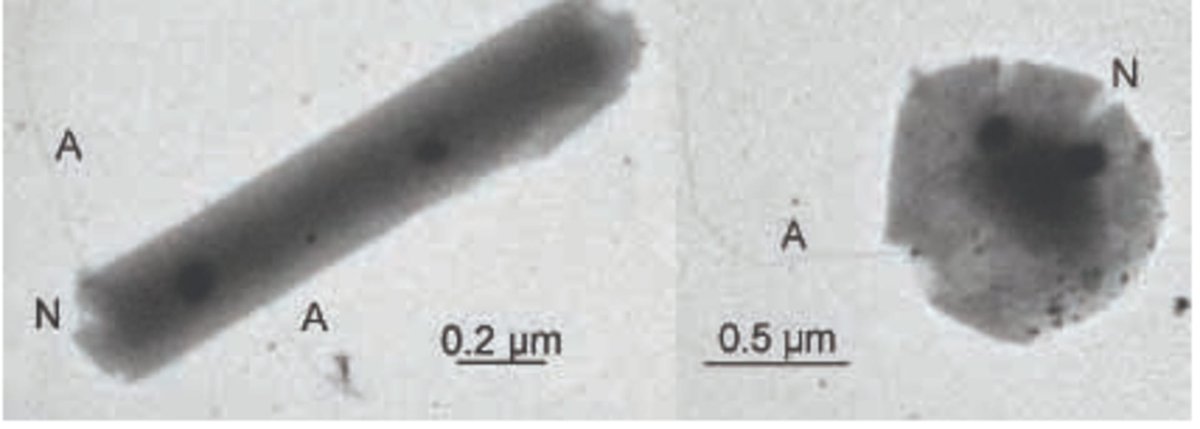
It's time for the EUKARYOTE DIVISION, filled with a delicious diversity of single celled protists. Did you know the vast majority of eukaryotic diversity is found within the protists? Multicellular life is a small slice of a modest branch on the tree of life.
Our first battle is between two gnarly parasites - Giardia and Trypanosoma. These two will be battling it out in one very unfortunate HUMAN GUT.
Giardia is a flagellated protist found in freshwater lakes and streams. It's (one of) the reason you should keep your mouth closed when swimming - ingesting Giardia can lead to giardiasis, an acute gastrointestinal illness.
Giardia has two nuclei and six flagella.
Giardia has two nuclei and six flagella.

Trypanosoma causes Chagas disease, with inflammation of the heart, skin, and other systems. The name is derived from the Greek trypano- (borer) and soma (body) because of their corkscrew-like motion. 

Trypanosomes infect humans through mucous membranes or the gut - accidentally ingesting the feces of an infected beetle can start an infection. It will migrate in the body to the circulatory system, but would survive in a human gut for a period of time.
Both parasites are vying for the same resources, and both are multiplying fast. Only the votes will determine which wins this race - and with only 52% of the vote, TRYPANOSOMA ADVANCES. Tough luck, Giardia, but the real loser here was that poor human host.
Next up, we have Andalucia godoyi battling Lotharella oceanica in the SURFACE OCEAN. Both of these protists are found in saltwater environments - Andalucia in marine intertidal sediments, and Lotharella is a component of marine photosynthetic plankton.
Dr. Hug did her M.Sc. trying to place Andalucia and its relatives on the Eukaryotic tree of life. It's an Excavate - a group of anaerobic flagellated protists sharing some conserved features, including reduced mitochondria as an adaptation to anaerobic life. 

Wait, anaerobic life? Yes, the Excavata are anaerobic, and don't contain the machinery to generate energy from oxygen as a terminal electron acceptor. Suddenly the surface ocean isn't looking so... hospitable.
In contrast, Lotharella oceanica feels right at home, literally. Lotharella are small algae that float in the water column of the ocean, maximizing light exposure for photosynthesis. ncma.bigelow.org/CCMP622 

Lotharella are chlorarachniophytes, belonging to the Rhizaria super group (red in tree in above tweet). They are distinguished by their secondary endosymbiosis of an algae - they kept the chloroplast of the algae they "ate", as well as the nucleus of that captive cell!
Over time, most of the genes have been moved into the main genome of the cell that ate the algae, but a remnant nucleus, called a "nucleomorph" remains. semanticscholar.org/paper/Nucleomo… 

Andalucia really wouldn’t survive the open ocean, and Lotharella won the vote with 72%, so on both counts, LOTHARELLA ADVANCES.
Our third battle of the day for the EUKARYOTE DIVISION is between Paramecium and Dinoflagellates in a FRESHWATER LAKE - the first time Google's random number generator threw a 3 out!
Paramecium is a "slipper shaped" amoeba found in aquatic habitats worldwide, including freshwater LAKES and stagnant ponds. Paramecia spend their time swimming and feeding - both facilitated by their cilia, small hair-like structures that beat in unison. mcgill.ca/oss/article/di… 

Dinoflagellates are gorgeous organisms who build silica theca (shells) with distinct grooves and a myriad of shapes. They have two flagella and are sometimes called "sea whirlers" for their spinning movements. 

Dinoflagellates are most commonly found in the ocean, where they cause red tides (poisonous mega-bloom events) and can light up the water with their phosphorescence when disturbed. Dinoflagellates are also found in freshwater systems, so are likely doing ok in our lake.
Want a deep dive into Dinoflagellates? Here's a podcast on these neat microbes! ocean.si.edu/ocean-life/pla…
Both our competitors survive the lake environment, and thus it comes down to a vote - with 80% of the class support, PARAMECIUM ADVANCES!
Our final battle for the EUKARYOTE DIVISION is between the Foraminifera and Amoeba proteus, who will be battling in SOIL. Both of these organisms are charismatic members of marine plankton and pond water communities - but how will they fare in soil?
Foraminifera is a radiation of amoeba that build elaborate tests, or shells out of calcite and protein. Their tests are covered in small holes, through which amoeboid "tentacles" extend, catching food from the water.
researchgate.net/figure/Foram-a…

researchgate.net/figure/Foram-a…


One 16S rRNA amplicon-based study identified foraminifera sequences from 17 out of 20 soil samples, indicating forams are wide-spread in soil environments. Soil foraminifera have not been seen or cultivated - we only know this from molecular evidence.
pubmed.ncbi.nlm.nih.gov/20406290/
pubmed.ncbi.nlm.nih.gov/20406290/
Amoeba proteus is a large freshwater amoeba, a common denizen of pond water, and a fun at-home science culture. If you can make a pond in a jar, you can probably keep Amoeba proteus as a pet for a while. This amoeba is a predator, grazing on bacteria and smaller protists. 

Can Amoeba proteus survive in soils? It can! As long as they have a relatively high water content, non-testate amoeba like Amoeba proteus are frequently found in soils. microbewiki.kenyon.edu/index.php/Amoe…
Both of our amoeba are able to survive in soil, though it's not where they are famously found. The class voted a narrow 60% margin of victory: AMOEBA PROTEUS ADVANCES.
• • •
Missing some Tweet in this thread? You can try to
force a refresh







